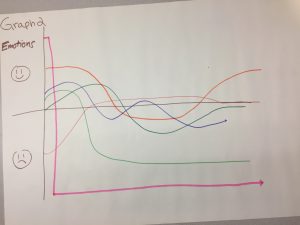Farewell
As we get closer to end of the term, our CBEL project is also approaching completion. After working together with many inspiring and talented individuals for three months, it’s not easy to say goodbye but we have worked hard and it is time to move on. In this last blog post, we will be sharing a brief process of our project and reflecting on one of our many moments of significance.
Reflection of Trailing the map
What?
Moments of significant change can occur at any time, whether during positive events or negative obstacles that arise from unpredictable results. Like we mentioned in Blog 2, our group had a slow start since we were unfamiliar with each other’s style of work and did not know how to collaborate in the most efficient and considerate way. However, as the project progressed, our style of collaboration became clearer. We discussed and all agreed on that our moments of significance occurred last week when we conducted map trailing of the VFAM.
So what?
We started by dividing all potential community partners in UBC with the other tutorial group that was also trialing on campus. In order to work most efficiently, we decided to break the group into pairs and trial at three different locations; AMS food bank, Agora Cafe, and Sprouts Cafe. Surprisingly, things did not progress as smoothly as we assumed. Each pair met different obstacles which reflected a moment of a significance. However, as discussed in lecture and explained in a reading by Shulman L. S., uncertainty contributes to a higher learning, and that was exactly what happened as we surveyed for feedback on the map (Shulman, 2005).
One location’s participants suggested that an offline version would be beneficial. This seemed very relevant since we assumed that individuals who will use this tool have access to the internet. Another possible barrier is the fact that not everyone has literacy skills; images would be a good solution for this feedback. With these existing barriers to the tool illuminated, individuals who are homeless or very low-income may still unable to access and use this tool. Moreover, another location reported that many people are unaware of the available resources in their community, they were surprised to see the variety of food assets and had no idea they existed. We then realized how significant it is to educate people about their local resources by spreading the knowledge in public. After surveying community members, we think suggestions such as the addition of a rating system to the map might be a useful feature to offer users a brief understanding about the food asset, and help with determination whether it is appropriate for them to visit. A significant result of the map trialling process was our deepened understanding of the multiple underlying issues that prevent access to food assets in the city.
Now what?
Ultimately, we hope that the feedback we collected during the map trialling will contribute to meaningful updates of the VFAM tool, and give insight to our partners and map-creators on the opinions of members within the community. The value and potential benefits of the VFAM became apparent once we had participated in helping people learn how to use it. Therefore, in order to make it easier for Vancouver community partners to view and utilize community food assets strategically, the combined efforts between our group, community members, and the expert guidance of the public health dietitians at Vancouver Coastal Health are needed.
References:
Shulman, L. S. (2005). Pedagogies of uncertainty. Liberal Education, 91(2), 18–25. Retrieved from http://files.eric.ed.gov/fulltext/EJ697350.pdf



